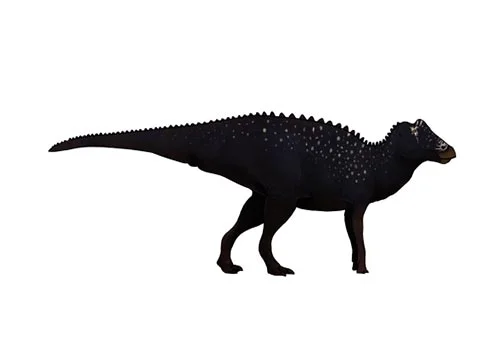Prosaurolophus (Before Saurolophus)

Pro-sore-o-lo-phus
Barnum Brown - 1916
Herbivore
Estimated 9 meters long
Euornithopod
P. maximus (type), P. blackfeetensis
Canada, Alberta - Dinosaur Park Formation. USA, Montana - Two Medicine Formation
Late Cretaceous, 76.5-73 million years ago
Prosaurolophus Facts
Prosaurolophus, meaning “before Saurolophus,” is a genus of large, plant-eating dinosaur that lived during the Late Cretaceous period, approximately 76.5 to 73 million years ago. It was a member of the group known as hadrosaurs, also called duck-billed dinosaurs, which were characterized by their flattened, elongated snouts and hundreds of closely packed teeth.
Prosaurolophus was first discovered in 1916 in Alberta, Canada by Barnum Brown, a famous paleontologist who also discovered the first known Tyrannosaurus rex. Since then, additional fossils have been found in various locations around North America.
Prosaurolophus was a large dinosaur, measuring up to 9 meters (30 feet) in length and weighing up to 2,500 kilograms (5,500 pounds). It had a bulky body with four sturdy legs and a long, heavy tail. Its snout was elongated and flattened, forming a broad, U-shaped jaw with hundreds of closely packed teeth for grinding plant material.
One of the most distinctive features of Prosaurolophus was a bony crest on top of its skull, similar to that of its close relative Saurolophus. However, the crest of Prosaurolophus was more triangular in shape and lacked the forward projection of Saurolophus. It is thought that the crest may have been used for display or to produce vocalizations.
As a herbivore, Prosaurolophus likely fed on a variety of plants, including ferns, conifers, and flowering plants. It had a sophisticated dental battery that allowed it to grind tough plant material efficiently.
Prosaurolophus is an important dinosaur for understanding the evolution and diversity of hadrosaurs during the Late Cretaceous period. As a paleontologist, studying fossils of Prosaurolophus and other dinosaurs helps us to better understand the ancient ecosystems in which these creatures lived, and how they adapted to changing environmental conditions over time.



